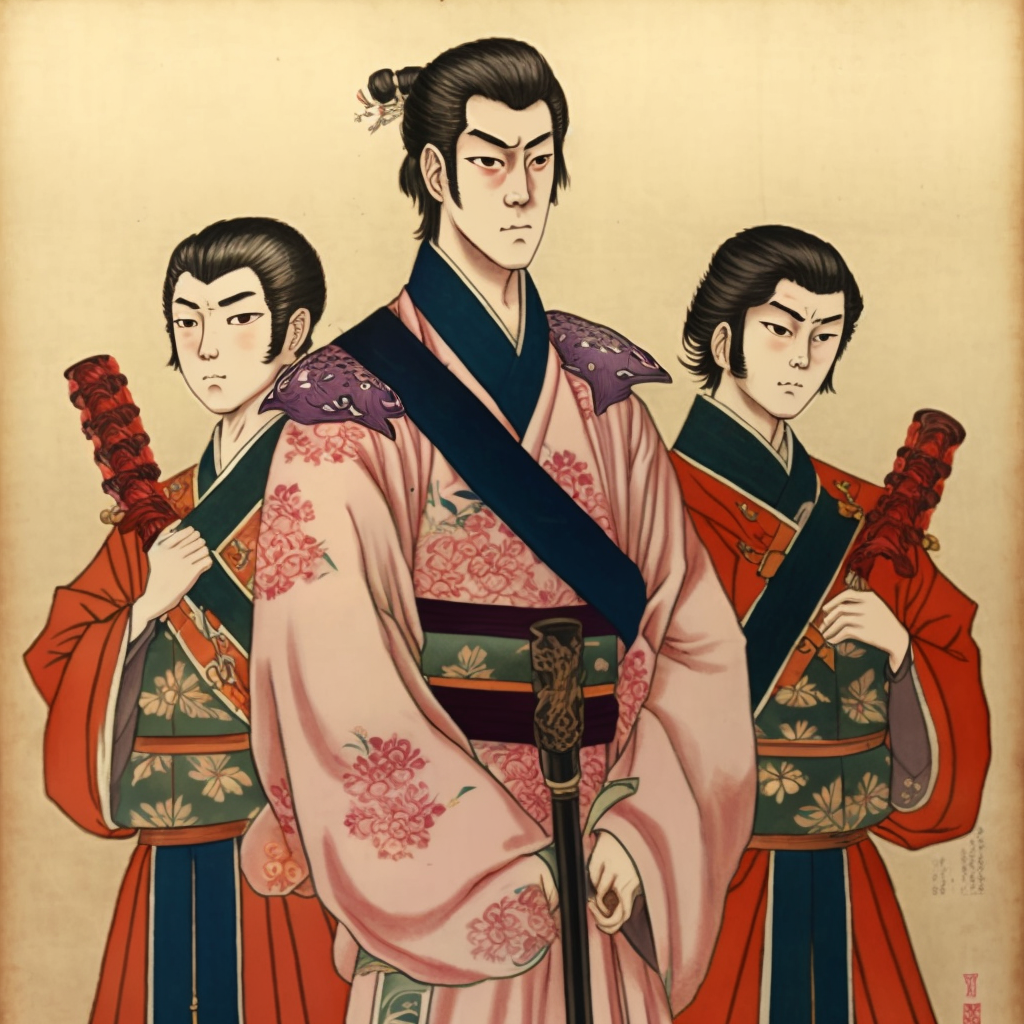Oda Nobunaga, born in 1534 in Owari Province, Japan, remains one of the most significant figures in feudal Japanese history. Known for his strategic vision, his relentless determination and his ability to modernize and unify Japan, Nobunaga left an indelible legacy in the annals of the Land of the Rising Sun.
Youth and Ascension
Nobunaga was born into the Oda clan, a family of daimyo (feudal lords) from Owari province. Despite a rather turbulent start to his life marked by internal rivalries, he quickly demonstrated leadership skills and a burning ambition to unify the fragmented Japan of the time.
His rise to power began with his succession to the Oda clan in 1551, where he began to consolidate his power and expand his influence.
Military Strategist and Modernizer
Nobunaga was a forward-thinking and ruthless military strategist. He revolutionized warfare tactics by introducing firearms and adopting innovative strategies, breaking ancient military traditions to strengthen his position.
Alongside his successes on the battlefield, Nobunaga initiated economic and social reforms. He encouraged trade, supported arts and culture, and worked to modernize Japan’s economy.
Unifier of Japan
His ultimate ambition was the unification of Japan. Nobunaga undertook a series of daring military campaigns, conquering territories and eliminating rival forces. However, his reign was cut short in 1582 when he was betrayed by one of his generals and forced to commit suicide during the Honnō-ji incident.
Legacy and Impact
Despite his untimely death, Nobunaga’s legacy was immense. His successors, notably Toyotomi Hideyoshi and Tokugawa Ieyasu, continued his work and completed the unification of Japan, thus laying the foundation for the Edo era.
Grandes Dates Clés de la Vie d’Oda Nobunaga :
- 1534 : Naissance d’Oda Nobunaga dans la province d’Owari au Japon.
- 1551 : Succession au sein du clan Oda, marquant le début de sa montée en puissance.
- 1560 : Victoire décisive à la bataille d’Okehazama, établissant sa réputation de stratège militaire habile.
- 1568 : Nobunaga soutient Ashikaga Yoshiaki pour devenir shogun, renforçant son influence politique.
- 1573 : Proclamation de l’abolition du shogunat Ashikaga, prenant le contrôle de Kyoto.
- 1575 : Victoire à la bataille de Nagashino, en utilisant des armes à feu pour vaincre une force ennemie bien supérieure.
- 1582 : Tragique fin lors de l’incident de Honnō-ji, Nobunaga contraint de se suicider à la suite d’une trahison.
Ces dates représentent des moments cruciaux de la vie d’Oda Nobunaga, démontrant ses triomphes militaires, son ascension politique et la fin tragique de sa vie, qui ont tous contribué à forger son héritage dans l’histoire japonaise.
Sa vision stratégique, son utilisation novatrice de la technologie militaire et son désir de modernisation ont contribué à façonner le Japon moderne. Oda Nobunaga demeure une figure incontournable de l’histoire japonaise, un guerrier visionnaire qui a repensé le paysage politique et culturel de son époque.
Sources :
- The Samurai Sourcebook by Stephen Turnbull (2000).
- Oda Nobunaga: The Battle of Okehazama and the Samurai Revival by Stephen Turnbull (2001).
- The Making of Modern Japan by Marius B. Jansen (2000).
- Nobunaga’s Ambition: Rise to Power (Video Game, Koei, 2007).



